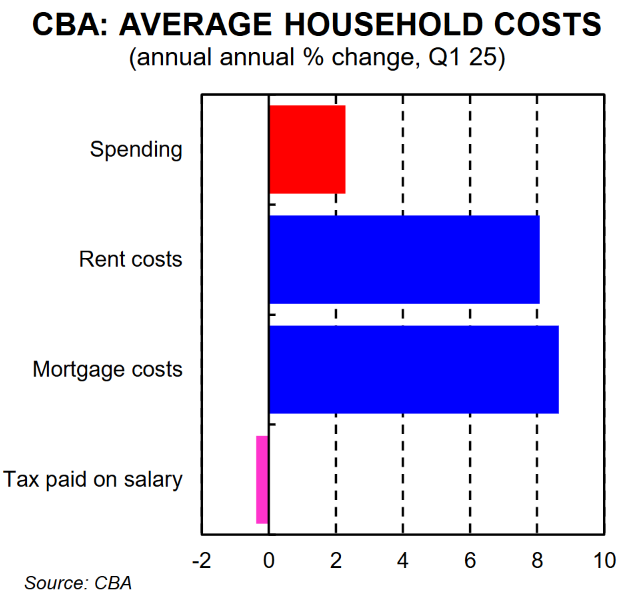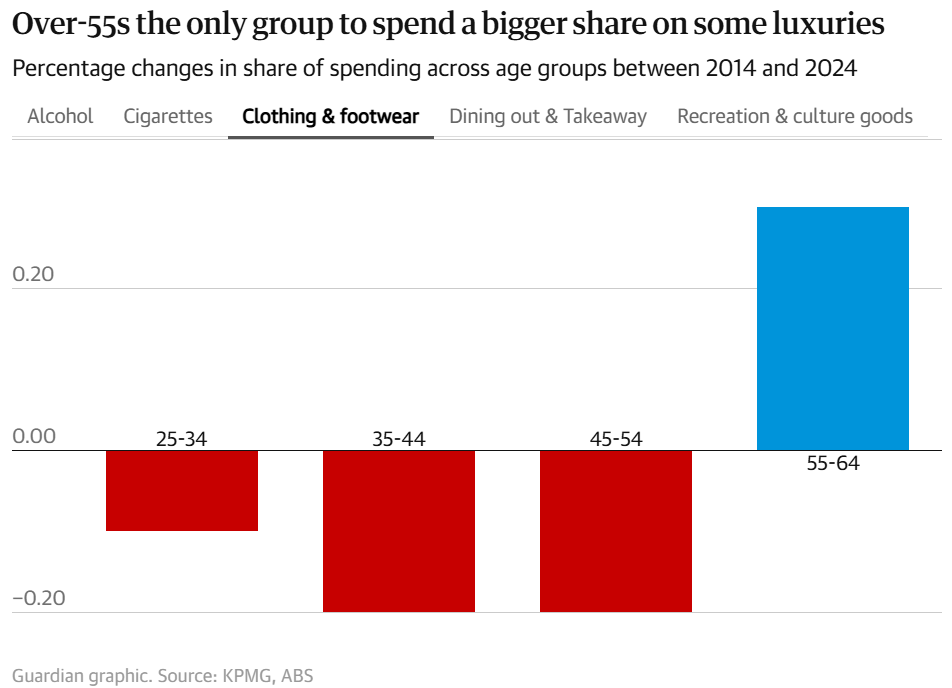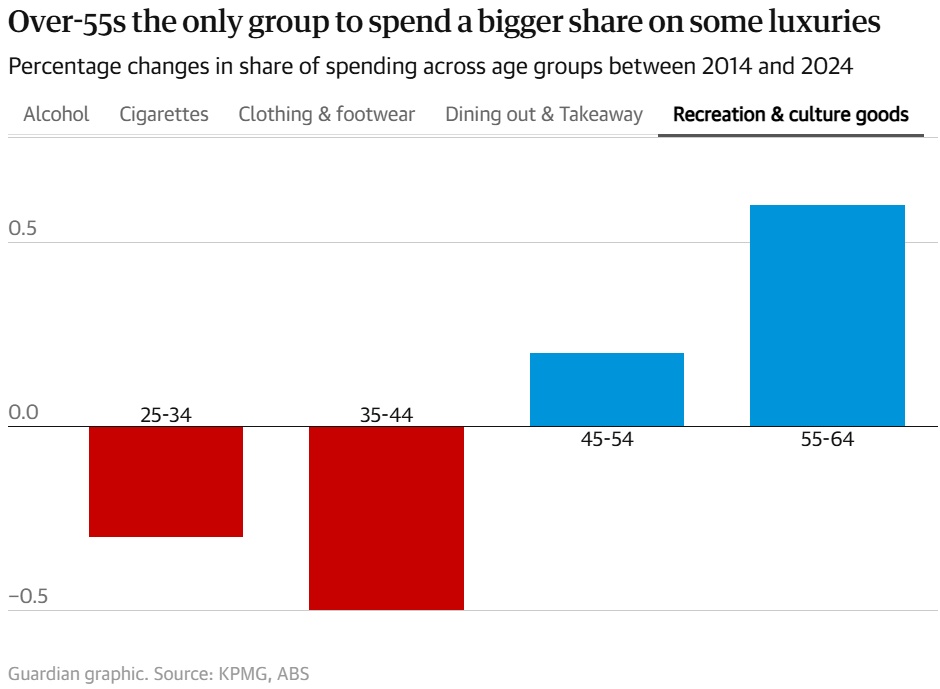Throughout last year, CBA published data showing that older Australians had increased their spending significantly above inflation, whereas younger Australians had cut back hard on spending.
For example, in the year to Q3 2024, Australians aged 70-plus increased their spending on essential categories by 7.4% and spending on discretionary categories by 8.0%. Both were well above the 2.8% rise in headline CPI inflation over the same period.
By contrast, Australians aged between 18 and 39 cut expenditure on both essential and discretionary categories, while those aged between 40 and 59 increased their spending by less than CPI inflation.

Annual spending growth by age group (Q3 2024). Source: CBA.
The decline in spending by young people makes sense given the sharp rise in mortgage payments and rents since the pandemic, which the older generations are largely immune from.

The CBA data above was confirmed by The Guardian, which showed that older Australians with little to no mortgage debt and growing incomes have increased their spending on luxury goods:
Rising incomes have gone straight to non-essential purchases such as recreational goods, KPMG says.

Alcohol and cigarettes grew as a share of total expenditure for households in the 55 to 64-year-old group, while all other groups between the ages of 25 and 54 cut back, KPMG found.

Older workers also dedicated more money to dining out, takeaway meals, clothing and footwear.

“These are people who’ve paid the mortgage off largely, they’ve got the kids out the door in a lot of cases, and they have that disposable income,” Rawnsley says.
“The younger baby boomers or the older [gen] Xers who might see themselves as having a treat of getting some designer footwear [are upgrading] from just having something on the rack to put on every day”.
New research from the e61 Institute also shows that the percentage of young men and women living with parents increased from 53% and 42%, respectively, in the 1990s to 60% and 53% by the early pandemic years.

Source: e61 Institute. Chart by The Guardian.
“Housing costs could potentially explain the rise in living with parents”, e61 Institute wrote. “Higher rents directly lift the cost of moving out into the rental market, while higher purchase prices can encourage staying with parents longer to save more for a deposit”.
“Survey results from 2023 indicate that the cost of housing affected the timing of moving out for around 37% of 18-24-year-olds in capital cities, and 28% in regional areas”.
Rising housing costs, which primarily hurt the young, have drained disposable income, resulting in austerity.
While the older generations are less impacted by housing costs and are travelling well financially, they are increasingly being called upon to support their adult children with accommodation and free childcare.

